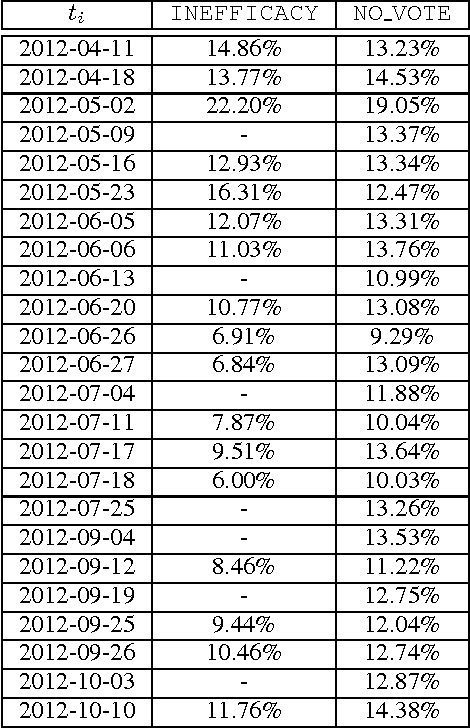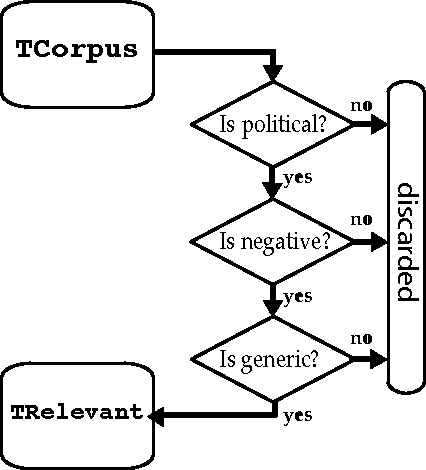Matteo Zignani
DURENDAL: Graph deep learning framework for temporal heterogeneous networks
Sep 30, 2023



Abstract:Temporal heterogeneous networks (THNs) are evolving networks that characterize many real-world applications such as citation and events networks, recommender systems, and knowledge graphs. Although different Graph Neural Networks (GNNs) have been successfully applied to dynamic graphs, most of them only support homogeneous graphs or suffer from model design heavily influenced by specific THNs prediction tasks. Furthermore, there is a lack of temporal heterogeneous networked data in current standard graph benchmark datasets. Hence, in this work, we propose DURENDAL, a graph deep learning framework for THNs. DURENDAL can help to easily repurpose any heterogeneous graph learning model to evolving networks by combining design principles from snapshot-based and multirelational message-passing graph learning models. We introduce two different schemes to update embedding representations for THNs, discussing the strengths and weaknesses of both strategies. We also extend the set of benchmarks for TNHs by introducing two novel high-resolution temporal heterogeneous graph datasets derived from an emerging Web3 platform and a well-established e-commerce website. Overall, we conducted the experimental evaluation of the framework over four temporal heterogeneous network datasets on future link prediction tasks in an evaluation setting that takes into account the evolving nature of the data. Experiments show the prediction power of DURENDAL compared to current solutions for evolving and dynamic graphs, and the effectiveness of its model design.
Temporal Smoothness Regularisers for Neural Link Predictors
Sep 16, 2023Abstract:Most algorithms for representation learning and link prediction on relational data are designed for static data. However, the data to which they are applied typically evolves over time, including online social networks or interactions between users and items in recommender systems. This is also the case for graph-structured knowledge bases -- knowledge graphs -- which contain facts that are valid only for specific points in time. In such contexts, it becomes crucial to correctly identify missing links at a precise time point, i.e. the temporal prediction link task. Recently, Lacroix et al. and Sadeghian et al. proposed a solution to the problem of link prediction for knowledge graphs under temporal constraints inspired by the canonical decomposition of 4-order tensors, where they regularise the representations of time steps by enforcing temporal smoothing, i.e. by learning similar transformation for adjacent timestamps. However, the impact of the choice of temporal regularisation terms is still poorly understood. In this work, we systematically analyse several choices of temporal smoothing regularisers using linear functions and recurrent architectures. In our experiments, we show that by carefully selecting the temporal smoothing regulariser and regularisation weight, a simple method like TNTComplEx can produce significantly more accurate results than state-of-the-art methods on three widely used temporal link prediction datasets. Furthermore, we evaluate the impact of a wide range of temporal smoothing regularisers on two state-of-the-art temporal link prediction models. Our work shows that simple tensor factorisation models can produce new state-of-the-art results using newly proposed temporal regularisers, highlighting a promising avenue for future research.
Political Disaffection: a case study on the Italian Twitter community
Feb 08, 2013



Abstract:In our work we analyse the political disaffection or "the subjective feeling of powerlessness, cynicism, and lack of confidence in the political process, politicians, and democratic institutions, but with no questioning of the political regime" by exploiting Twitter data through machine learning techniques. In order to validate the quality of the time-series generated by the Twitter data, we highlight the relations of these data with political disaffection as measured by means of public opinion surveys. Moreover, we show that important political news of Italian newspapers are often correlated with the highest peaks of the produced time-series.
 Add to Chrome
Add to Chrome Add to Firefox
Add to Firefox Add to Edge
Add to Edge